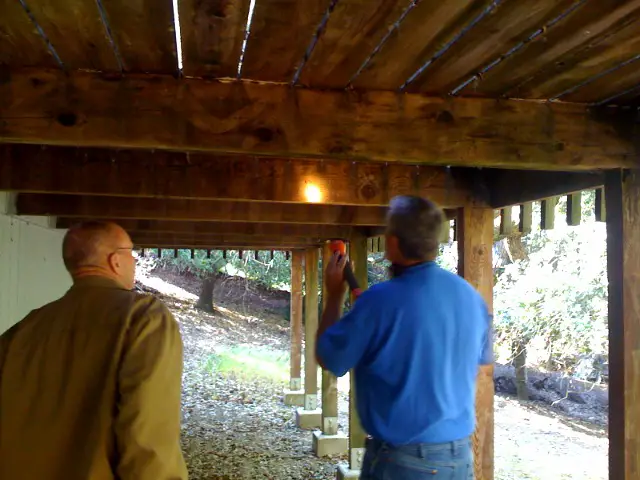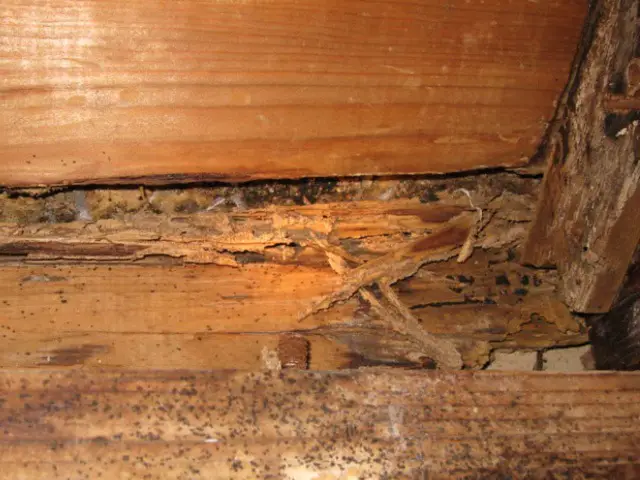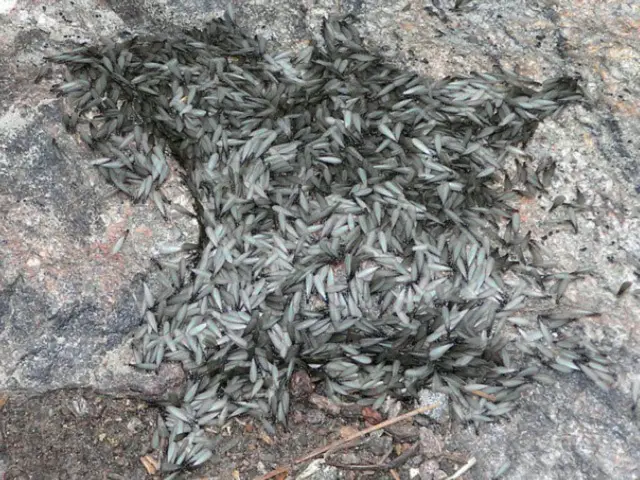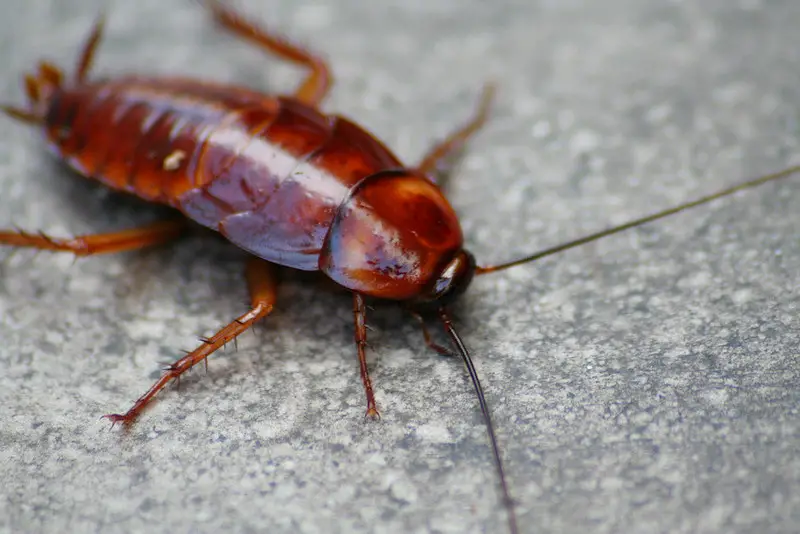Is it possible to rodent-proof a house?
Rodent proofing tips
While your home may be beautiful on the inside, it could be a potential nesting spot for rodents on the inside. Rodents are not only annoying but also dangerous to your health. So here’s a quick look at some easy ways to rodent-proof your home.
After I found out how dangerous rodents can be, I wanted to learn how to rodent-proof my house. One of the best ways to rodent-proof a home is to close easy entry points rodents could use to get inside. Use rodent exclusion materials such as caulk, concrete, expanding foam to fill gaps and crevices, steel, copper or aluminum wire mesh to stuff into holes around plumbing, and wire screening to cover holes. Seal entry points in porches, foundations, crawl spaces, and walls.
Types of Rodents
The two most common types of rats found in homes are pack rats and roof rats. Pack rats, also known as wood rats, are fuzzier by comparison to the roof rat and have a penchant for collecting bright and shiny objects such as gum wrappers, sparkly jewelry, buttons, bits of mirror and coins. On the other hand, Roof rats have scaly, hairless tails and infest the house by searching for food and water. They tend to chew through boxes and storage areas, creating complications in the kitchen and throughout the house.
Related posts:
- What is the Best Rodent Control?
- Can Skunks Climb Fences?
- Can Skunks Climb?
- Do Skunks Live Underground?
Are rodents harmful?
As mentioned earlier, rats like to chew, but they don’t realize that what they’re chewing on could cause real damage. Rats and mice have continuously developing incisor teeth, so they need to gnaw on things like wood, plastic, paper, and cardboard to keep them from overgrowing. They also chew on car and electrical wiring, which can lead to structural fires.
Additionally, rats ruin insulation for nesting materials, inhabiting small and dank places like spas and pools, sheds, attics, basements and spaces between the floor and ceiling. The worst part about rodents is that they are susceptible to diseases, which they can transmit to humans through bites or from insects on their backs that bite. Murine typhus, leptospirosis and salmonellosis are just a few of the life-threatening illnesses these creatures carry.
How to rodent-proof your home?
Prevention is the first step toward making sure that rodents do not overrun your home. Rats and mice are nocturnal, which means you should be listening at night for scuffling sounds in the walls, the attics, storage spaces or structures in the backyard.
Pick up fallen fruit or vegetables in your garden and trim back plants on a regular basis. Seal up cracks in the walls and fix any foundation problems. Keep food in airtight storage containers and keep your garbage bins rodent-proof.
Unfortunately, setting traps and bait are short-term solutions. If you have one mouse in the house, it should work, but chances are there may be more. Call a rodent control agency or exterminator for a full consultation regarding possible rat infestation. With these disease-ridden creatures running amuck in your home, it’s better to be safe than sorry.
Proofing your home from rats is never a failsafe pest control measure, but you can avoid exposing yourself to disease by keeping rats under control.
Habits that could attract rodents to your house
When we talk about preventing rodents, many times, we are speaking directly to homeowners. Of course, your home is where you spend most of your time with friends and family and the last place you want pests or rodents. But we’ve seen our fair share of pest infestations in homes and elsewhere, including industrial areas.
Think about it – rodents feel at home in dirty places. With a little bit of work, you too can rodent-proof your house. You may not even realize your habits are contributing to your home’s rodent problem.
Avoid the following bad habits to rodent proof your home:
Don’t leave drinks out
If you’re like us, coffee is what fuels you on the days you need it most. You might not even remember a day that didn’t start with a hot cup of joe in your favorite ceramic mug.
But think back to the last time you cleaned that mug out. Do you wash it after every use? Or do you sometimes, accidentally, of course, leave it on the countertop overnight? This mistake right here may be what is attracting pests and rodents at home.
Rodents, bugs and pests LOVE leftover liquids. So whether you’re a coffee drinker like us or prefer sodas and energy drinks, wash it out. At the end of each day, wash and put away any dishes or cups. If you’re recycling a soda bottle or Styrofoam coffee cup, rinse it out first. Any residue left behind will attract these unwanted pests at home.
Rodent proof your trash cans
I get it – having several garbage cans inside and outside your house is mighty convenient. But the problem here is that each garbage bin can attract rodents because they are not emptied as often as they should be.
I totally understand that it’s hard to make time for everything when you’re busy working and taking care of your family. However, take the time to rodent proof your trash. It’s also critical to empty trash cans frequently. If you really love having multiple trash cans inside and outside your house, then I highly recommend taking it out yourself at the end of each workday.
Heating unused spaces can attract rodents
As we get into the winter months, a cold garage or room in your house can be almost unbearable. But not only will turning the heat off after working in the garage or a shed will help you save on power, but it will also make it less appealing for pests and rodents to intrude when no one is around.
A warm, humid space can feel like the perfect home to rodents looking for shelter during this cold winter season. Avoid these pests at home by killing the heat when the day is over.
Having an untidy home attracts rodents
Now please don’t take offense to us advising you to tidy up your home. But it’s a fact that a cluttered house can be the perfect environment for pests and rodents to hide. Whether it’s unfiled papers, trash from snacks, or even jumbled-up computer cords – pests at home will use virtually any cover they can find to make a little nest in your home.
One easy way to get rid of rodents is to schedule a weekly cleaning. Developing a routine cleaning to keep rodents out will make the process much easier. Keeping your clean is a sure-fire way to avoid pests at home.
Leaving dishes out bring rodents in
Again, I totally understand that a busy workday can mean that simple things like cleaning your dishes get put on the back burner of your long to-do list. But just as it’s a bad idea to leave crumbs on the floor, leaving dirty dishes soaking at home can be an even worse idea in the house.
Not to sound gross – but when you leave your dishes to soak, you’ve basically just made a pool for pests to enjoy, flavored with your leftover lunch bits. So take your time to clean off your dishes and dry them after each use.
If you find that your family members have formed this bad habit, make a note of it and address the issue. Leaving dishes out is one of the easiest ways to attract pests and rodents at home – and yet it is one of the easiest habits to fix.
How to mouse-proof a house?
It seems inevitable that a house will eventually become the new home to a mouse or two. However, there are ways for you to keep mice away, removing them safely once becoming a nuisance. This quick look at mouse proofing identifies some problem areas in the home and how to get rid of mice.
Mouse proofing tips
Keeping mice under control involves prevention methods that keep them at bay. The best way to do this is to “build-out” by eliminating openings where they can enter. Seal up all openings that are larger than a quarter inch. You’ll need to smooth patching material over the surface to keep the mice from chewing through it. Fix any problems or cracks with the foundation, in the walls, up in the attic, etc.
Another way to rodent-proof the house from mice is to give pests fewer reasons to stay in your home—store food, especially cereals, dried fruit and so on, in airtight jars and canisters. If you grow fruit or vegetables in the backyard, pick up any fallen or half-rotting food and throw it away. Maintain flowerbeds and trim back trees so you can look for evidence of burrowing and nesting.
Do mousetraps work?
Snap traps, or mousetraps, lure with a piece of food and quickly kill the mice with heavy steel springs. These traps are inexpensive, and while some may protest the humaneness of this method, it’s a much better alternative to glue traps.
Glue traps use a sticky substance to catch rodents on the hunt for food. While safe to use around children, glue traps do not kill mice immediately, leaving them for days or weeks to die from hunger. On the other hand, Snap traps kill mice instantly but are very dangerous, as the springs can easily break an adult finger. Use these with caution around children and pets.
What is the most effective mousetrap?
Rodenticides, or rodent poisons, kill mice in a shorter amount of time than the glue, but not as quickly as mousetraps. Poison bait should not be used around kids or pets because they are likely to eat it before a mouse does.
Live traps are the most humane way of getting rid of mice since you can trap and let them free outdoors. You can also leave food and water in the traps, so mice don’t suffer before you find and release them. Make sure to drop off the mice several miles away from your house, or else they will just return to their old nest.
Electronic mouse traps deliver an electric shock that kills the rodent in seconds. However, these traps are more expensive than the standard snap trap.
Sonic pest controllers use high-frequency sound waves to keep rodents out of your home. These work somewhat well unless you own a hamster or gerbil, in which case it can hurt your pet. If you think your home has a mouse infestation of more than several mice, call a pest or rodent control company to send a specialist to your home.
How to rodent-proof a business?
In the past ten years as a rodent exclusion professional, I have encountered many different aspects of rodent infestations as well as developed and honed numerous techniques for rodent exclusion practices. While the majority of my work has involved residential applications, a most recent case involving a physician’s office was particularly sensitive in the protocol needed to address the issue:
Prior to the first evidence and sightings of mice, there had never been any earlier case of rodent activity within the building. The first evidence was noticed in the administrative offices on the second floor of the building, followed by sightings on ground level in the examination rooms. The owner of the building first enlisted her regular pest control provider to address the issue but soon realized that the regular “bait and trap” method for “controlling” the population would not keep the mice out of the building, to begin with, and as a physician, she could not risk “sightings” by patients. To her credit, she responded swiftly to address the issue immediately and did not let the population of mice get out of control.
During the initial inspection and consultation with the customer, dozens of areas of concern were noted. In addition to the usual areas such as utility line entry points, stucco weep edges, and dormer vents for the attic, I observed that a section of the enclosed soffit panel was dislodged at roof level under an eave. This was perhaps the most concerning point of entry.
Honestly, any animal (up to the size of a grown raccoon) that had the wherewithal to access the roof could have entered the attic through this opening. While we usually address the exterior of a building almost exclusively, due to the consideration of the customer managing a physician’s office, she requested that we include in the bid additional work to seal up any cracks and gaps in the drywall work and screen behind duct vents for the HVAC system. This additional layer of protection provided a redundant system to isolate and manage a future rodent intrusion should one ever occur.
Due to the sensitive nature of proofing a physician’s office, several extra steps of discretion had to be taken within the scope of the trapping and proofing:
- All rodent traps had to be isolated in utility rooms, closets, and generally where patients would not see them.
- Rodent traps were only to be checked early in the morning before the first scheduled patient may arrive.
- All the rodent exclusion work could only be done on Friday afternoon when the office was open, but not seeing patients.
The process commenced smoothly throughout the rodent trapping and phases of rodent exclusion. As was expected, only a few mice were trapped during the process due to the recent development of the mice entering the building. Nevertheless, we continued to trap throughout the proofing phases, and for a week, after all, exclusion was complete to be certain no mice were still inside.
Final thoughts on rodent-proofing your home
If you are guilty of any of these inviting rodent habits, don’t worry. They all can be avoided by doing one thing: simply set aside time to clean up your house. Whether it’s taking your trash out at the end of each day, turning the thermostat down, or scheduling a cleaning day with your kids and spouse, you can avoid these habits that could be attracting pests and rodents to your house.
Do you have rodents at home?
However, if you do find rodents in your house, trust a pest control company to eradicate your rodent problem. Make sure the pest control company you hire uses an environmentally-friendly approach for pest removal at home. Are you ready to rid your home of pests?




